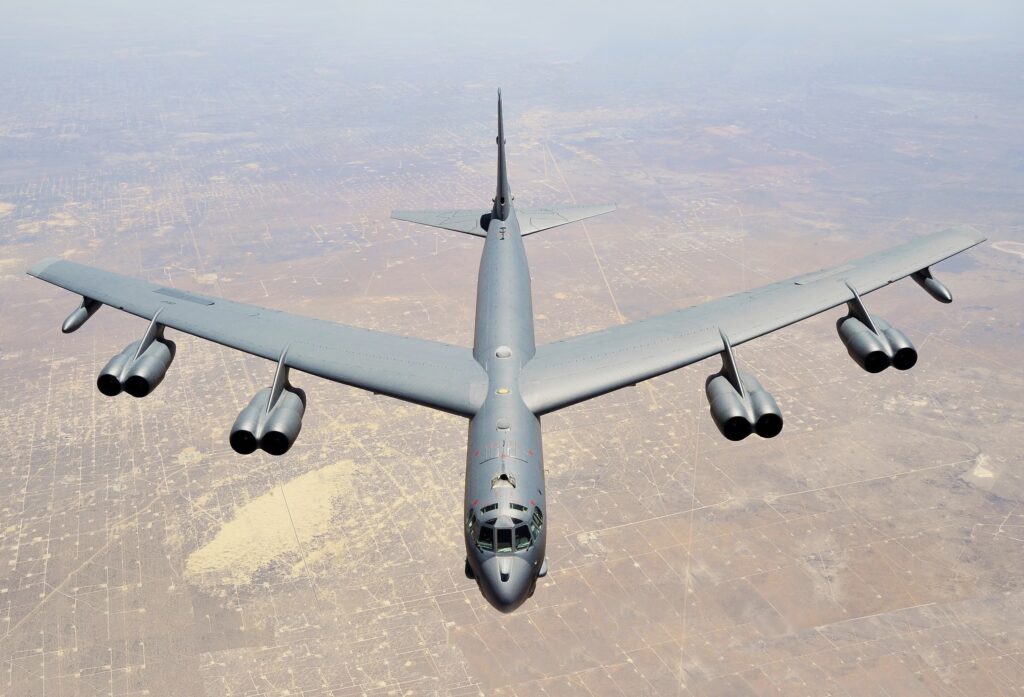Aircraft Information
> Aircraft Make: Boeing. Model: B-52. Nickname: Stratofortress
> Aircraft Mil Civ Description: Large Jet
> FAA Category and Class: Airplane Multi-engine Land
> Engine Description: 8 engines (!)
Aircraft Experience
> As of: 9/2/2021
> Number of Hours Flown: 4
> Number of Times Flown: 1
> Other Aircraft Models Associated: none
First Flown Information
> Sequence First Flown: 41
> Date First Flown: 5/6/1988
> Location First Flown: Westover ARB, MA
> Who and/or What Organization First Flown With: USAF Squadron (TBV)
Recollections: Another DT-II exercise as an Instructor at USNTPS (you can see why being an instructor there is one of the best jobs in aviation!). I remember three things about my flight in the “Buff” (Big Ugly Fat F-er):
1) We got to inflight refuel off of a USAF KC-135 tanker. I pulled in and fought hard to stay in position, moving the yoke in roll fairly frequently and aggressively, along with frequent inputs on the throttles (eight of them!). I was working pretty hard. The IP in the right seat says to me “Bob, you’re staying in contact but you’re working too hard…mind if I show you how to do it?” I relinquished the controls and watched him show me how. He pulled in, moving the controls what appeared to me–as a trained test pilot–to be exactly the compensation I’d been using…relatively large/frequent lateral inputs, throttle inputs. And he says “See? It’s not that hard.” I chuckled to myself and took it as a lesson concerning compensation and Cooper Harper ratings.

(c) Wikipedia
2) I shot an instrument approach during my “qual eval” and, while on the approach, I got about 3 knots below the target speed. Over the intercom, I heard “you’re 3 slow”. I looked at the IP sitting next to me and his lips weren’t moving. I also didn’t recognize the voice. So, I said “who’s talking?” and the response came “RADAR NAV”. The Radar Navigator on the B-52 is located “downstairs”, on a lower deck below the cockpit, in a window-less area of the airplane. I learned during the debrief that USAF Tech Order so-and-so requires that the Radar Nav verbally report any speed deviation on approach slower than 2 knots. Good job Radar Nav! (though what I was really thinking was “I KNOW I’m slow….I’m working it…YOU come up here and try to fly this thing!”)
3) On my flight, I lucked out and had about a 15-20 knot crosswind on landing. The B-52 is unique in that crosswinds are handled by landing wings level in a “crab”…but the landing gear itself is aligned with the runway by a hydraulically powered system which rotates the landing gear…there’s a control on the aft portion of the center aisle stand where you set the angle/speed of the wind and the rest is automatic (see figure). It worked like a champ! Easiest crosswind landing ever.

(c) aopa.org
Leave a Reply